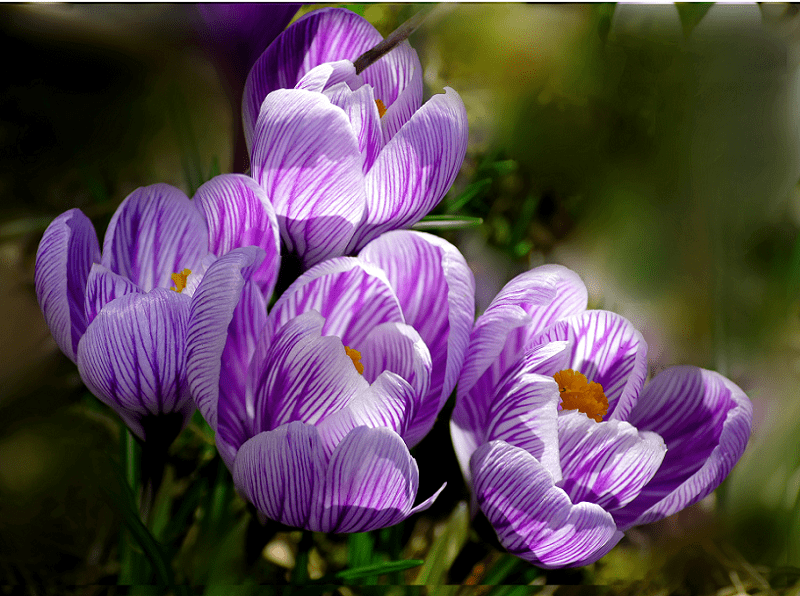Crocus Facts
- First of all, it bears noting that the short term of Crocus in fact serves as the collective common name for a large genus. Furthermore, all acknowledged members of this well known genus evolved as flowering plants. Currently, botanists recognize a total of 90 varieties of these visually stunning flora.
- In addition, each of these remarkable species share yet another trait that may surprise some people. That’s the fact that these beautiful plants also remain considered part of the Iris family. All of them also develop as perennials and develop from corms.
- Further, many varieties of these works of Nature have become highly cultivated as decorative plants. Yet, the different forms of Crocus differ in one somewhat unexpected manner. That holds true because, depending upon the species, these delicate flowers bloom in either Autumn, Winter, or Spring.
- Most notably, however, these magnificent flowering plants first garnered attention for their beauty in ancient times. Evidence indicates that the early cultivation and harvesting of specific types of Crocus began in the Mediterranean. This practice predominantly occurred on the island of Crete.
Related Articles
Crocus Physical Description
Since the term applies to so many individual species, physical differences quite naturally exist among them. Nonetheless, the group does collectively share certain characteristics. Firstly, the majority of known Crocus forms develop as either cup-shaped, solitary, or salverform in nature. The flower also typically tapers off into a narrow tube.
Secondly, each of them shares another specific trait. This holds true due to the fact that the plant typically has a total of three stamens. Notably, the highly popular spice saffron derives from the stigmas of one particular species. That species bears the name of the Crocus sativus. This species generally blooms in the Autumn.
However, when it comes to color patterns, the varying types of Crocus vary significantly. Nevertheless, the hues of lilac, mauve, yellow, and white generally predominate. In addition, the leaves most commonly appear grass-like, and ensiform. These also typically display a white central stripe along the leaf axis, and the leaf margin in total.
- Kingdom: Plantae
- Phylum: Angiosperms
- Class: Monocots
- Order: Asparagales
- Family: Iridiceae
- Genus: Crocus
Crocus Distribution, Habitat, and Ecology
Given that 90 different species of Crocus comprise this impressive genus, habitat ranges understandably vary. In point of fact, these breathtaking blossoming flora appear across a wide swathe of the world. More specifically, though, this range of habitation includes parts of Europe, the Middle East, Northern Africa, Aegean Islands, and portions of Asia, including China.
Furthermore, all known and acknowledged varieties of these gorgeous plants evolved as endemic to a specific range of habitat types. However, the nature of these regions serves to limit its possibilities. That’s because it typically appears in regions of woodland, scrub, and meadows. But, it also grows from sea level to alpine tundra regions.
Its long history of cultivation has also been relatively well documented. In point of fact, depictions of this practice appear in Akrotiri, Knossos, and Santorini. In addition, humans also introduced the first of these to the Netherlands around the year 1560. These arrived from Constantinople via the Roman Empire’s ambassador.
Subsequently, the extreme beauty of the delicate Crocus generated incredible popularity. So great was that popularity, and so intense the interest, that within 60 years, new varieties already appeared in development. These included several cream-colored varieties. Some of these forms still remain popular with gardeners today.
Species Sharing Its Range
Check out our other articles on Earth’s Many Magnificent Marsupials, Gulper Eel, Berca Mud Volcanoes, Cannonball Tree, Tibetan Sand Fox, Rainbow Grasshopper, Tawny Frogmouth

